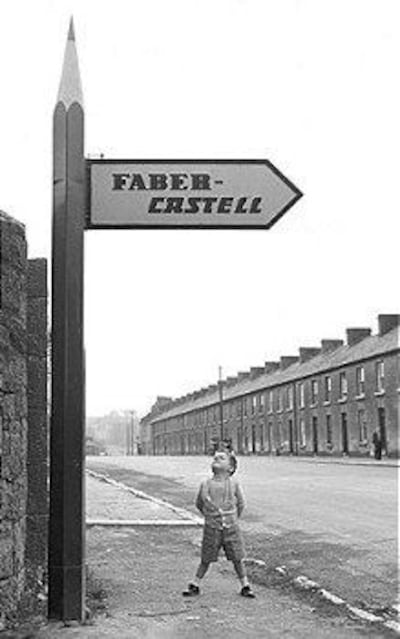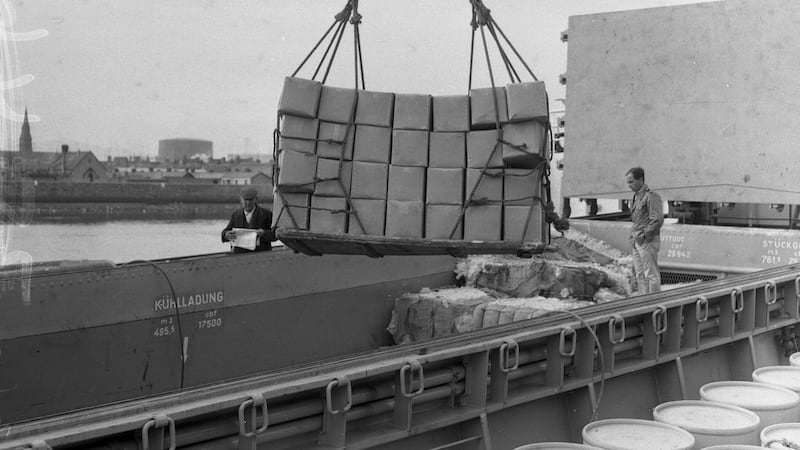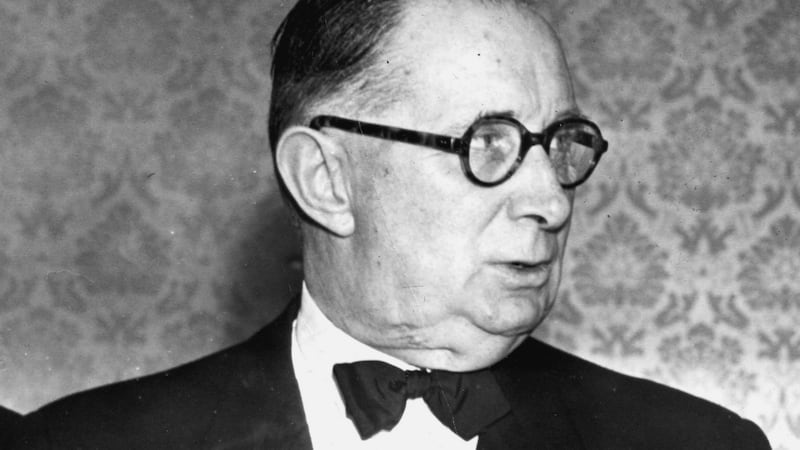
The narrative surrounding the origins of Ireland’s modernisation is flawed. TK (Kenneth) Whitaker and Seán Lemass are commonly extolled for securing Ireland’s emergence from the “Dark Decade” of mass emigration and economic stagnation (the 1950s). Yet under close scrutiny any notion of a supposed Whitaker-Lemass economic revolution is seriously defective. It was a rather protracted process of experimentation and there were several other architects involved. Moreover, it involved deep institutional infighting.
In particular, a severe confounding factor is that it was the Second Interparty Government (1954-57) composed of Fine Gael, Labour and Clann na Talmhan that gave rise to fresh economic thinking after years of Fianna Fáil hegemony. Perhaps only a non-Fianna Fáil government could challenge some of the economic shibboleths and vested interests that Fianna Fáil governments had nurtured since de Valera first took power in 1932.
Was it the discovery that Ireland offered a back door into Britain for German and non-Commonwealth firms that played a decisive role? This led to the Interparty Governments’ pioneering of enticements to attract export-based foreign industry. The irony, of course, was that Ireland had chosen to leave the Commonwealth when it became a Republic in 1949. Nonetheless, it retained preferential trade access in a gesture of British benevolence.
What is clear is that the Second Interparty Government, led by taoiseach John A Costello, experimented in desperation from 1954 to 1957. Sandwiched between Éamon de Valera’s final two Fianna Fáil governments (1951-54; 1957-59), it is normally censured as ineffective and incoherent. The coalition was a most unlikely assortment of bedfellows that was united by opposition to Fianna Fáil’s domination since 1932. Whether by accident or design it forged a new economic approach.
From 1949 Volkswagen Beetles were assembled under franchise in Dublin by Motor Distributors Ltd. These iconic cars were the first VW cars assembled outside of Germany
By 1955 the Irish socio-economic crisis was acute. Simultaneously, the West German “economic miracle” was an international sensation. West Germany was Ireland’s second largest trade partner (after Britain). Approximately 20 per cent of Ireland’s balance-of-payments deficit was attributable to West Germany, which was grossly disproportionate to the approximate 3 per cent share of Irish exports it took in 1955.

Highly regarded German manufacturers had re-established their prewar markets in Ireland. From 1949 Volkswagen Beetles were assembled under franchise in Dublin by Motor Distributors Limited. These iconic cars were the first VW cars assembled outside of Germany. By 1956 it was argued in Dáil Éireann that so many VW Beetles were being sold in the country that they were a significant contributor to Ireland’s balance-of-payments difficulties.
Successive Irish governments after 1950 assumed Ireland could equalise the trading relationship as West Germany was dependent on food imports. However, German farmers’ unions, restrictive practices and a Danish and Dutch duopoly prevented an Irish break-in to that market.
Global special import levies were introduced by the minister for finance, Gerard Sweetman, in 1955 to deal with the balance-of-payments deficit. These hurt German exporters but they did not alter the fundamental Irish-German trade imbalance. Dublin adopted tough bargaining tactics in the annual trade negotiations with Germany but the Second Interparty Government proved powerless to reset the unequal trade balance by increasing food exports. Eventually, the authorities recognised that a failure to agree trade deals with West Germany would rebound and cause greater damage to Ireland. William Norton, the tánaiste and minister for industry and commerce, discovered that manufactured goods produced by protected industry in Ireland were uncompetitive internationally. Another way forward was needed.
Before 1954 regular enquiries were received by the Irish authorities from German companies. A few German firms calculated that expansion into Ireland would allow them to surmount British imperial tariffs and open up the British imperial/Commonwealth market. But they were not welcomed or assisted by the Department of Industry and Commerce which was committed to the policy of national self-sufficiency (autarky). That involved setting up firms to supply the home market and displace British imports.
It was the pencil manufacturer Faber-Castell from near Nuremburg which turned out to be the trailblazer that began to change Irish thinking. The Fermoy Progressive Association promoted the Co Cork town as an investment location in the early 1950s. Among the initial firms attracted to locate there, with the assistance of Industry and Commerce, was Faber-Castell. After 1954 Norton and Industry and Commerce afforded Faber-Castell all the necessary assistance that they could to replace British imports and develop exports to the British Commonwealth.
Norton listened to the Industrial Development Authority (IDA) and decided to launch a campaign to attract export-oriented foreign companies. This squared the circle of preserving the interests of the protected Irish firms that supplied the domestic market, while securing foreign capital and boosting exports. Irish delegations visited the Netherlands, Sweden, the United States, Belgium and West Germany during 1955 and 1956.
Norton caused a media sensation at a press conference in Bonn in 1955 when he emphasised that German firms based in Ireland could tunnel under Commonwealth tariffs
Norton spearheaded an interagency co-operative effort involving the Department of Industry and Commerce, the IDA, the Department of External Affairs and Coras Teachtála Teo (CTT, the Irish export board). He caused a media sensation at a press conference in Bonn in August 1955 when he emphasised that German firms based in Ireland could tunnel under Commonwealth tariffs. It led to a flood of interest in West Germany beginning a lengthy process of intensive engagement by the IDA and Industry and Commerce with them to fashion measures to meet these firms’ needs.
Several decisions were made by the Second Interparty Government to assist the search for foreign investment, such as nationwide grants for site acquisition and factory construction. The minister for finance also catapulted the talented and young (40 years old) TK (Kenneth) Whitaker in as secretary of the Department of Finance in May 1956. His meteoric rise broke all the rules of seniority in the Irish civil service. It is often overlooked that the celebrated Export Profits Tax Relief, which was designed to appeal to foreign investors, was first introduced by Norton and Costello in 1956. Future governments would refine and perfect a more coherent package of incentives.
The record clearly shows Whitaker was not an admirer of export-oriented foreign firms during the 1950s, so he cannot be credited for this innovation
It was also a key period for opening up Irish aviation links, especially with West Germany, and the interparty government formed a single national body for tourism, Bord Fáilte, ending several years of argument. This was well-timed to exploit a burgeoning German tourist interest in Ireland. That was occasioned by the publication of Heinrich Böll’s cult classic Irisches Tagebuch (Irish Journal) in 1957. His charming account of the west of Ireland, and in particular Achill Island, had a powerful influence on his countrymen who wished to escape the industrial modernity of West Germany.

“TK” is commonly credited with securing the political support of Seán Lemass as minister for industry and commerce from 1957 for modernisation and this was greatly assisted by Lemass’s succeeding de Valera as taoiseach in 1959. This close working partnership is usually regarded as laying the groundwork for the First Programme for Economic Expansion (1958-63) to promote foreign companies to invest in Ireland and achieve a reversal in Irish fortunes. Yet the record clearly shows Whitaker was not an admirer of export-oriented foreign firms during the 1950s, so he cannot be credited for this innovation. Moreover, Lemass was not a strong supporter of the IDA when he was minister for industry and commerce from 1951 to 1954, although he was growing disillusioned with protectionism. The IDA was initially tarnished in Fianna Fáil’s circles as the creation of the First Interparty Government (1948-51) under Fine Gael minister for industry and commerce Dan Morrissey. Meanwhile, the tightfisted Department of Finance was concerned about possible costs of the IDA’s plans to attract industry. The IDA had to wait for Norton to gain the political and governmental support it required to fulfil its mission.
There was barely any emphasis on attracting export-oriented foreign firms to invest in Ireland in the First Programme for Economic Expansion. Instead it promoted the development of infrastructure, land improvements, and agricultural productivity. Whitaker’s objective was to find capital to make the necessary national investments to launch a take-off. And since Ireland was not a member of the International Monetary Fund or the World Bank he turned his attentions to finding the capital domestically.
His solution in the First Programme was to cut social expenditure (“deferring” expenditure on social spending, health and education) and redirect it towards national infrastructure to enable economic growth. Whitaker and Lemass’s integrated national plan was undoubtedly a psychological turning point for the nation. It finally publicised that the State had a modernisation vision after over a decade of economic stagnation. The plan drew some inspiration from French or West German economic planning.
But the critical changes that set the mould for contemporary Ireland’s dependence on industrial FDI were progressing independently of the First Programme. The Irish economy was recovering and it benefited from international forces. The biggest ever Irish boom in industrial exports (primarily to the UK) occurred in 1959. By this point the German economy was overheating with labour shortages and a capital surplus. Since 1955 the IDA, in co-ordination with the Department of Industry and Commerce, was continuing its campaigning to interest investors from West Germany and elsewhere. This paid off.
Pressing domestic demand for change, the international supply of investment and preferential Commonwealth access accounted for Irish moves forward from the mid-1950s
Another German market leader followed Faber-Castell’s example and opened a factory in Ireland in 1959. The crane manufacturer Liebherr invested in Killarney. Its initial interest was ignited during the inaugural Irish promotional campaign to West Germany in November 1955. By August 1960, 12 German firms were in production in Ireland and West Germany was Ireland’s second largest trade partner behind the UK. German firms were among the top two or three investing (year dependent) in Ireland throughout much of the 1960s. This is forgotten today as American firms predominate. However, from the late 1950s the West German economic motor at the core of the European Economic Community was the pole of attraction for Ireland.
Therefore, the combination of a pressing domestic demand for change with the international supply of investment and preferential access to the Commonwealth accounted for the Irish moves forward from the mid-1950s. Engagement with firms such Faber-Castell and Liebherr educated government agencies and departments about the demands of foreign investors and the requirement for large export markets. It was the start of an Irish approach to securing investment that continues to the present day. Whitaker and Lemass were in the right place at the right time after 1957, but the groundwork had been firmly established.
Ireland, West Germany and the New Europe, 1949-73: Best Friend and Ally? by Mervyn O'Driscoll is published by Manchester University Press, at £75. It is reviewed in The Irish Times this Saturday


















